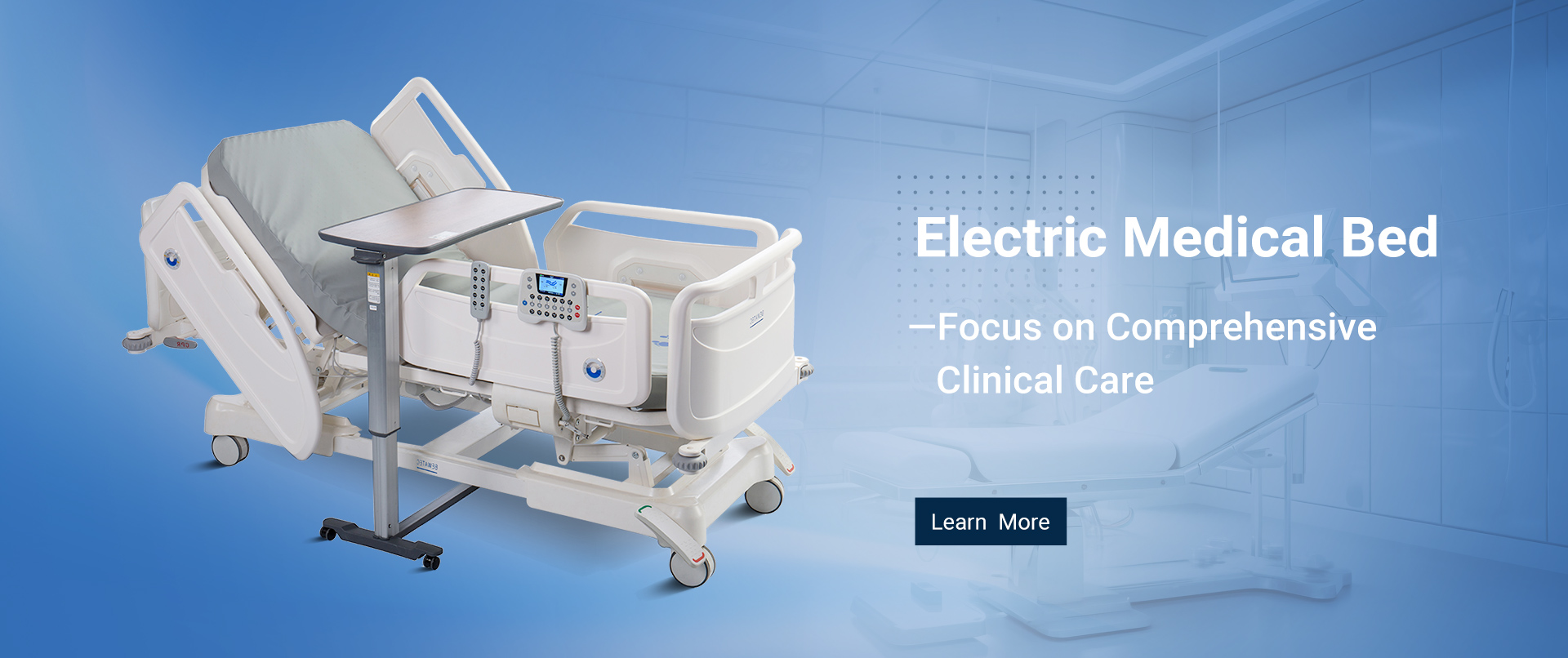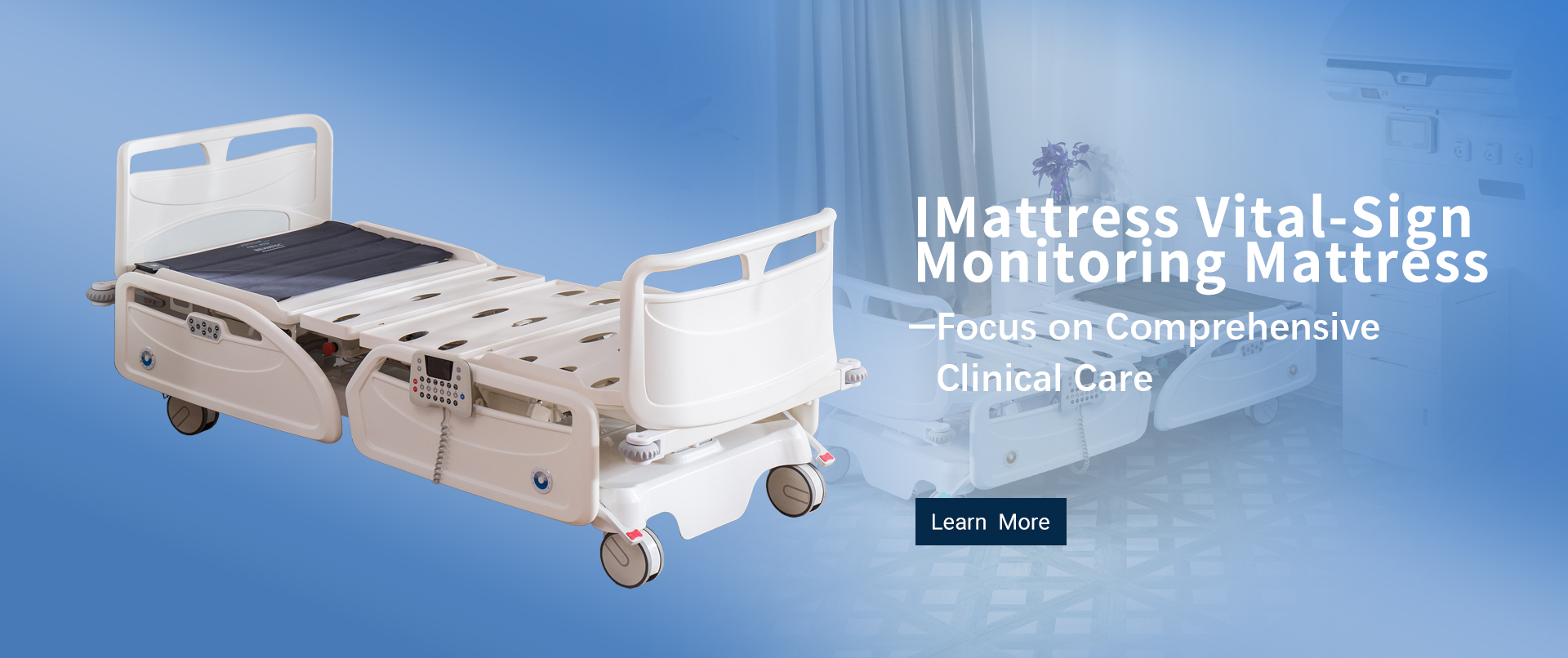
How to Select the Best Hospital Furniture: Detailed Specifications and Buying Guide for Global Buyers
Table of Contents
- Understanding the Importance of Quality Hospital Furniture in Patient Care
- Key Features to Consider When Choosing Hospital Furniture
- Material Options: Durability and Maintenance of Hospital Furniture
- Design and Ergonomics: Enhancing Comfort for Patients and Staff
- Budgeting for Hospital Furniture: Finding Value Without Compromising Quality
- Global Trends in Hospital Furniture: Innovations and Sustainability Practices
- Essential Features of Functional and Stylish Bedside Tables for Hospital Use
- FAQS
- Related Posts
Choosing the right hospital furniture is super important for improving patient care and creating a functional healthcare space. With so many options out there, it’s crucial to really dive into the details and features of each item on your Hospital Furniture List. You want to make sure you’re making the best choices! That’s where Bewatec (Zhejiang) Medical Device Co., Ltd. comes into play. They’re leading the charge in smart medical care and shaking up the global medical scene with their focus on digital transformations. They’re all about making sure patients receive comfortable, safe, and personalized care. This not only helps patients but also makes life easier for the medical staff.

In this blog post, we'll take a closer look at the key things to keep in mind when selecting hospital furniture, so you can make choices that really fit your needs and standards. Let’s get into it!
Understanding the Importance of Quality Hospital Furniture in Patient Care
When it comes to healthcare, you really can't underestimate the importance of good hospital furniture. I mean, a recent report from MarketsandMarkets highlights that the global market for hospital furniture is set to hit a whopping $43.14 billion by 2026! That’s all fueled by the need for better patient care and recovery spaces. Quality furniture isn’t just about looking good; it actually makes a huge difference in patient outcomes. You know, there are studies out there suggesting that having the right medical furnishings can boost patient satisfaction scores, cut down on the chances of injuries acquired in the hospital, and create a smoother workflow for healthcare professionals.
And let's not forget about ergonomic design! It plays a huge role in making sure patients are comfortable and safe. There’s some solid research published in the Journal of Hospital Medicine that shows how paying attention to ergonomic factors can really help reduce the risk of musculoskeletal issues for healthcare workers while also creating a healing space for patients. So, investing in high-quality beds, stretchers, and treatment tables that cater to the needs of both patients and caregivers is super important. Plus, focusing on flexibility and functionality means hospitals can tailor their spaces to accommodate a wide variety of patient needs, ultimately leading to better health outcomes across the board.
Key Features to Consider When Choosing Hospital Furniture
Choosing the right furniture for a hospital isn’t just about looks; it’s super important to think about a few key things to ensure it’s functional, comfy, and safe. After all, we want to make sure both healthcare providers and patients feel good about their space, right? So, it’s crucial to pick materials that are tough enough to last and still easy to clean—because let’s face it, hygiene is a big deal! Plus, furniture with ergonomic designs can really make a difference in patient comfort and help staff do their jobs more efficiently.

When it comes to picking hospital furniture, it’s a good idea to start by understanding the specific needs of the facility and who’s using it. For example, take a look at the space layout and think about how the furniture can be arranged to help things flow better. Also, don’t forget about tech! Smart furniture that adapts to different needs can be a game-changer. And let’s not overlook the importance of going green; using sustainable and eco-friendly materials is totally the way to go these days, reflecting that growing trend in healthcare.
At the end of the day, investing in top-notch hospital furniture is key to providing awesome healthcare services. By prioritizing functionality, comfort, and sustainability, hospitals can create spaces that truly support healing and boost overall patient satisfaction. Everyone wins!
Material Options: Durability and Maintenance of Hospital Furniture
When you're picking out furniture for a hospital, it's super important to know about the different materials available. You want something that’s sturdy and easy to take care of. The most common materials you'll find are stainless steel, plastic, and wood. So, stainless steel? It's a solid choice because it's tough, doesn’t rust, and is easy to sterilize—perfect for places where keeping things clean is a must. On the other hand, plastic is lightweight and simple to clean, but it may not last as long as metal. And then there's wooden furniture. It can look really nice and be quite durable, but it does require a bit more TLC to avoid damage from spills and scratches.
To keep hospital furniture in tip-top shape, make sure to clean it regularly with disinfectants, and don’t wait too long to deal with spills—nobody wants stubborn stains! It’s also smart to check your furniture regularly for any signs of wear and tear. If you can, think about investing in pieces that have removable and washable covers, especially for upholstery, to keep things looking fresh and lasting longer. Remember, picking the right materials isn’t just about durability; you also want to create a comfy environment for both patients and staff.
And hey, keep an eye on the maintenance needs for each type of material because some may require special cleaning products or techniques. Choose furniture that fits with your facility's goals for the long run, while also making sure its upkeep won’t stretch your budget too thin.
Design and Ergonomics: Enhancing Comfort for Patients and Staff
You know, design and ergonomics are super important when it comes to making sure both patients and healthcare staff feel comfortable in hospitals. I came across this report from the World Health Organization that really drives home how much the layout and design of healthcare spaces can affect how quickly patients recover. It’s all about picking the right furniture, honestly. When hospitals use furniture that’s designed with ergonomics in mind, it helps cut down on the physical strain for the staff, which is a total win for keeping things running smoothly. In fact, some studies suggest that if workstations are designed well, they could boost staff productivity by as much as 20%! That really shows how crucial it is for hospitals to have furniture that works for all the different tasks their teams have to tackle.
But there’s more to it. The American Hospital Association points out that comfort for patients is a big deal when it comes to satisfaction scores. Those scores are key for hospitals looking to boost their reputation and secure funding. Just think about it—having ergonomic beds and chairs that help with proper posture can actually lead to a 15% bump in how satisfied patients feel. So, when hospitals are out there shopping for furniture, they should definitely prioritize options that’ll make the experience better for everyone involved. Incorporating ergonomic principles into the furniture selection process isn’t just a passing fad—it’s really necessary for creating a healing environment and ensuring effective healthcare delivery.

Budgeting for Hospital Furniture: Finding Value Without Compromising Quality
When it comes to budgeting for hospital furniture, finding that sweet spot between cost and quality is super important. Healthcare facilities really need to consider not just how nice the furniture looks, but also how functional and durable it is, right? A solid budget plan lets hospitals invest in quality pieces that can handle the wear and tear of everyday use. To nail this down, it’s a good idea to do some digging into various suppliers and manufacturers, comparing what they offer in terms of specifications and warranties. This way, you might uncover some reliable options that give you a bang for your buck without breaking the bank.
Plus, don’t overlook bulk buying deals or long-term contracts; they can really amp up your savings without compromising on quality. Many manufacturers are willing to give discounts for bulk orders, which means hospitals can snag essential items—like bed frames, recliners, and waiting room seating—at a better price. And you know what? High-quality furniture often comes with extended warranties, which can seriously cut down on maintenance costs in the long run and keep everything running smoothly. By focusing on smart purchasing practices and what provides true value, healthcare facilities can stick to an efficient budget while creating a safe and comfy space for both patients and staff.
Global Trends in Hospital Furniture: Innovations and Sustainability Practices
You know, when it comes to hospital furniture, there's a lot going on these days, thanks to some exciting innovations and a serious focus on sustainability. It's like the healthcare sector is really changing the game when it comes to managing its resources. For instance, did you hear that the steel furniture market is projected to hit around $65.35 billion by 2024? And get this—it could soar to about $100.95 billion by 2033! That's a pretty impressive yearly growth rate of 5.3%. What's driving this? Well, it’s not just about needing stuff that lasts and works well; there's also a big push for being eco-friendly these days.
And it's not just the steel furniture market that's booming. Overall, the furniture market is on an upward trend too! They're estimating it will jump from $80.73 million in 2025 to around $53.81 billion by 2033, which shakes out to a cool 5.2% growth rate. If you look at laboratory furniture specifically, it’s set for some significant growth too, mainly because there’s this big demand for ergonomic and modular designs. As hospitals and healthcare facilities keep pouring money into modern, sustainable furniture options, you can really see the shift towards using innovative materials. It’s all about striking a balance between being functional and being kind to the planet in these hospital settings.
Global Trends in Hospital Furniture: Innovations and Sustainability Practices
Essential Features of Functional and Stylish Bedside Tables for Hospital Use
When it comes to hospital furnishings, the design and functionality of bedside tables play a crucial role in enhancing patient care and overall experience. Essential features of contemporary bedside tables should prioritize aesthetics, lightweight design, and durable construction. According to a report by the Healthcare Facilities Research Group, the environment of care significantly impacts patient recovery, highlighting the importance of choosing bedside tables that are not only functional but also visually pleasing. Tables that integrate seamlessly into the overall decor can contribute to a calming atmosphere, which is vital in a healthcare setting.
Lightweight materials in the construction of bedside tables facilitate easy maneuverability, enabling healthcare staff to adapt to the ever-changing needs of their patients. Hospitals often experience high traffic and the need for quick adjustments, making it essential for furniture to be both sturdy and portable. A 2022 market research report indicated that ergonomic furniture plays a vital role in reducing strain on healthcare providers, thus enhancing their efficiency. Sturdy designs ensure that the tables can withstand the rigors of daily use while maintaining a stylish appearance that resonates with modern healthcare trends.
Stylish bedside tables with a focus on practical features, such as storage options and easy-to-clean surfaces, can fulfill multiple functions. A study conducted by the Journal of Healthcare Design noted that furniture that accommodates personal items and medical supplies can improve patient satisfaction by fostering a sense of control over their environment. Investing in aesthetically pleasing, lightweight, and sturdy bedside tables not only aligns with best practices but also reflects the evolving standards of healthcare design, ensuring both patient comfort and staff efficiency.
FAQS
: The key features include functionality, comfort, safety, durability, ease of cleaning, ergonomic design, and the incorporation of technology.
Material selection is crucial for ensuring durability, ease of maintenance, and hygienic standards, with common materials being stainless steel, plastic, and wood.
Regular cleaning with disinfectant solutions, immediate addressing of spills, regular inspections for wear, and using washable covers for upholstery are recommended for maintaining hospital furniture.
Incorporating technology, such as smart furniture that adapts to various healthcare demands, can optimize workflow and enhance both patient comfort and staff efficiency.
Innovations and a focus on sustainability practices are major trends, with an increasing demand for durable and environmentally friendly furniture options.
High-quality hospital furniture is critical for providing exceptional healthcare services, supporting healing, and enhancing overall patient satisfaction.
The steel furniture market is projected to grow at a CAGR of 5.3%, reaching $100.95 billion by 2033, while the overall furniture market is expected to grow at a 5.2% CAGR.
Stainless steel is robust, resistant to corrosion, easy to sterilize, and ideal for high hygiene standards, making it a popular choice in healthcare environments.
The right choice of furniture can optimize workflow, enhance patient comfort, ensure safety, and reflect a commitment to sustainable practices in healthcare settings.
Sustainability is increasingly prioritized, with a trend toward using eco-friendly materials and practices that meet the growing demand for responsible resource management in healthcare.
Related Posts
-

Future Innovations in Best Hospital Equipment Bed for 2025 and Beyond
-

Future Innovations in IoT Sleep Health Solutions for 2025 and Beyond
-

Unlocking Comfort: Benefits of the Best Patient Bed for Enhanced Recovery
-

How to Choose the Best Medical Bed Manufacturer for Your Healthcare Facility
-

Ultimate Guide to Finding the Best Hospital Equipment Online for Global Buyers
-

Your Ultimate Guide to Best Wifi and 4/5g Connected Health Monitoring Solutions
Blog Tags:









